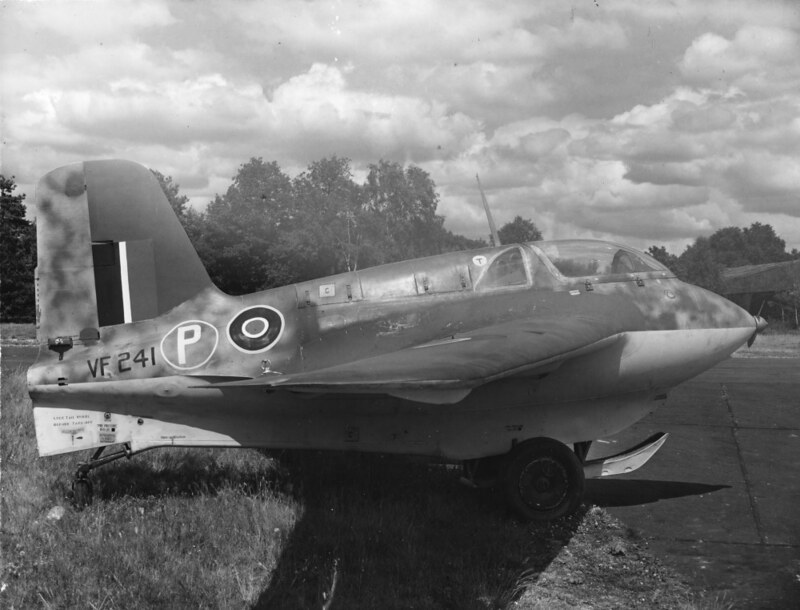
ASN Wikibase Occurrence # 312155
This information is added by users of ASN. Neither ASN nor the Flight Safety Foundation are responsible for the completeness or correctness of this information.
If you feel this information is incomplete or incorrect, you can submit corrected information.
| Date: | Saturday 15 November 1947 |
| Time: | day |
| Type: | Messerschmitt Me 163B-1a Komet |
| Owner/operator: | Royal Aircraft Establishment (RAE) |
| Registration: | VF241 |
| MSN: | 191060 |
| Fatalities: | Fatalities: 0 / Occupants: 1 |
| Aircraft damage: | Destroyed |
| Location: | RAF Wittering, Peterborough, Cambridgeshire, England -
 United Kingdom United Kingdom
|
| Phase: | Landing |
| Nature: | Test |
| Departure airport: | RAF Wittering, Cambridgeshire |
| RAF Wittering, Cambridgeshire |
Messerschmitt Komet VF241: Captured ex-Luftwaffe aircraft, retained for flight test trials. The RAE never tested the Me 163 under power themselves; due to the danger of its hypergolic propellants it was only flown unpowered. The distinguished test pilot Lieutenant Commander Eric M "Winkle" Brown piloted RAE's Komet VF241 on a number of occasions, the rocket motor being replaced with test instrumentation.
Written off (damaged beyond repair) 15-11-47: The Me 163 was being operated from RAF Wittering, near Peterborough in Cambridgeshire, due to complaints from the residents of Farnborough over the testing of captured ex-enemy Luftwaffe aircraft, following the fatal crash of a Dornier 335 the previous year.
As the fuel of this aircraft were considered dangerous, it was only ever flown unpowered, as a glider, being towed to altitude by a Spitfire.
During a sortie on 15-11-47, the Me 163 was making the last of a series of high-speed skid landings at Wittering. On this sortie, the aircraft touched down at Wittering at a speed of 150 knots. On touchdown, the hydraulic landing skid collapsed, and was forced into the fuselage, pushing the oleo legs through the cockpit floor, and jamming the rudder to full port deflection.
The aircraft then swung to port, dug in its wingtip, and came to rest adjacent to the airfield boundary. The pilot was the distinguished test pilot Lieutenant Commander Eric M "Winkle" Brown, who received minor injuries.
Wreckage of VF241 to No.54 MU RAF Cambridge, where scrapped in 1948
Sources:
1. Halley, James (1999). Broken Wings – Post-War Royal Air Force Accidents. Tunbridge Wells: Air-Britain (Historians) Ltd. p.69. ISBN 0-85130-290-4.
2. Final Landings: A Summary of RAF Aircraft and Combat Losses 1946 to 1949 by Colin Cummings p.349
3. The Captive Luftwaffe by Kenneth S West (Putnam. 1978):
4. https://en.wikipedia.org/wiki/Messerschmitt_Me_163_Komet#Postwar_flight
5. https://www.britmodeller.com/forums/index.php?/topic/235107832-me-163-colours-what-can-you-trust/
6. http://www.ukserials.com/results.php?serial=VF
7. https://en.wikipedia.org/wiki/RAF_Wittering#Post-war_use
Media:


Revision history:
| Date/time | Contributor | Updates |
|---|---|---|
| 06-May-2023 21:26 | Dr. John Smith | Added |
| 15-May-2023 10:04 | Nepa | Updated |
Corrections or additions? ... Edit this accident description
The Aviation Safety Network is an exclusive service provided by:


 ©2024 Flight Safety Foundation
©2024 Flight Safety Foundation